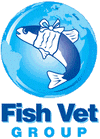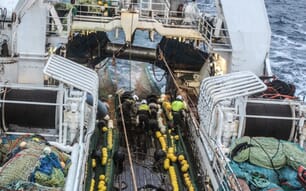
There are, however, circumstances when carbon dioxide levels can be relatively high and there is an increasing body of evidence to suggest that there are a number of ways in which CO2 can have an adverse effect on fish health.
Carbon dioxide levels of below 10mg/l are thought to be well tolerated by fish, although sensitivity to the gas varies between species. The level of CO2 in the water varies with the respiratory and photosynthetic activity of animals and plants in incoming water, the level of decomposition of organic material in that water (a very significant contributor to CO2 levels in some nutrient-rich waters), and the respiration of the fish themselves. CO2 can build up to significantly high levels in systems with large numbers of fish and relatively slow water turnover.
The effect of increased CO2 in water is to reduce the rate at which CO2 from the fish's own metabolism can be released from the blood through the gills, thus the CO2 in the blood also increases - this is known as hypercapnia - resulting in a drop in the blood pH, an acidosis. At the same time the oxygen-carrying ability of the haemoglobin in the blood is reduced.
So, what is the effect of this hypercapnia? In the short term the physiology of the fish can counteract the effect by balancing the acidosis with an exchange of ions such as increasing the uptake of bicarbonate and losing hydrogen and phosphate ions and little harm is done. In the long term this balancing act can have a more profound effect on the health of the fish.
Nephrocalcinosis in salmonids has long been recognised as a pathological entity related to high dissolved CO2, eventually leading to the formation of large mineralised deposits within the excretory tissue of the kidney and associated kidney pathology. The condition can result in poor condition and performance and occasional fish loss, particularly if other 'stressors' are present. The relationship between nephrocalcinosis and high CO2 is still not completely understood, but is likely to involve the excretion of minerals, particularly phosphorus and calcium, when compensating for blood acidosis.
Some of the work presented most elegantly at recent Alpharma conferences would also suggest that poor water quality in hatcheries and smolt units, particularly high CO2 and hypercapnia, may lead to an increased susceptibility of fish to pathogens which later leads to clinical disease with, for example, IPN. By paying appropriate attention to this aspect of water quality in the early rearing stages, this may reduce vulnerability to clinical disease.
Tony Wall, in a recent Fish Farming Today article (A is for Deformity) highlighted issues relating to spinal abnormalities. It has been postulated that bone demineralisation associated with hypercapnia may be playing a role in this and it is an area which needs to be rigorously investigated.
As mentioned earlier, CO2 is not the easiest of gases to monitor, standard laboratory methods are pretty complex, although there is a relatively easy titration method which is fairly accurate and could be carried out on the farm. CO2 meters tend to be costly and temperamental (insert wife joke here).
Do try to consider the effect of CO2 on your fish stocks. Remember that high levels of oxygen may not help either as the fish respiratory rate is governed by levels of oxygen, high O2 can slow the rate of elimination of CO2 from the blood, thus increasing the hypercapnia. By increasing levels of oxygen, you may just make things worse.
Source: Fish Vet Group - July 2005




